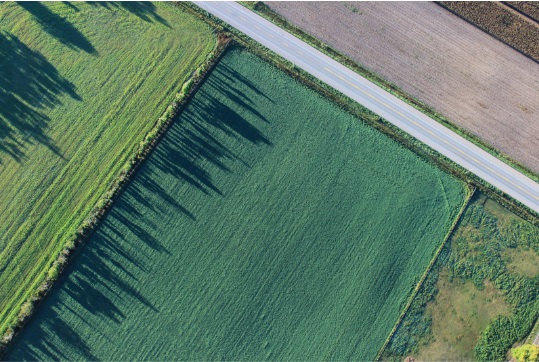Contributed Post
How do you feel about your outdoor space? Is it the place where you can kick back in a sun lounger and relax? Could you serenade your friends on your covered patio? Do you have a horse and a whole paddock to ride around with it? Your outdoor space is yours to do what you want with, but are you doing it right?
Your garden is the place where you can craft the natural world to your tastes. Some of us have small gardens, some of us have acres and acres to our name, and some of us only have a window box to try and introduce some plant life to. But no matter the kind of space you have, it’s always best to have some kind of organisation to it; especially if you’re trying to grow foods with the seasons!
Make sure you know the top and bottom of organisation tips, especially if you’ve got animals in your yard, and you’ve got a barn to take care of at the same time. All in all, you’re going to need plenty of tricks up your sleeve to make sure you’ve always got a good system to keep everyone fed and watered, and to finally implement that vegetable garden you’ve been dreaming of!
If only hedge growth was always as neat as this! (Source)
Use ALL the Resources Available to You
If you’ve got a few acres to your name, or simply just a larger than usual outdoor space, why not put all of the abundant resources it’s exposed to to good use? For example, if you’re sick of constant rain downfall during the Autumn and Winter months, getting your wellies all muddy and your clothes always retaining a vague stench of damp, why not do something about it? There’s all that water on offer, just falling out of the sky after all, and you could be putting it to much better use. It could very well save you some time and energy.
Well, by installing some rainwater tanks, you’re going to be raking in the saved pennies and pounds on your garden maintenance and animal upkeep. You’ll have barrels of water you can put towards watering your plants and keeping your grass healthy, especially during hot and dry weeks. We waste perfect drinking water on these plants all the time, so make sure you’re using the watery benefits from the heavens and save the good stuff for yourself.
And if that wasn’t enough, you’ll also be able to switch back and forth from mains to rainwater supply in your own house, decreasing your bills and allowing a greater sense of independence on your farmstead. Just think, when there’s a burst water main nearby, and it won’t be fixed for a few days, you’re going to have a steady supply of water to keep you and your animals healthy and happy. Hey, you won’t have to go without flushing the toilet during this situation at least!
Arranging the Fences Correctly
If you’ve got some planning time available, now that the harvest is on its way and the winter will be soon to follow, why not do an entire overhaul of your outdoor space? If you’ve got enough room or the creative savvy to separate one section from another, this is your chance to do so. As long as you know how high the fence can be without your need for some planning permission, you could dedicate a good couple of weeks to refencing your entire landscape.
Decide where you’d like your new sector to be, what you want to put in it, and then use the answers as a guideline for what fence you’re putting up. Depending on the type of material you’re using, whether you’re willing to erect stone walls or use barbed wire, you’re going to need to space your fence posts about 10 feet apart at least.
If you’re looking to set up a practice dressage field for your horse, make sure you know you have the rights to use the land for equestrian purposes. You shouldn’t need to get any permission for setting the markers or jumps out, and it’s unlikely you’ll need to use this equipment for very long, so go nuts if your horse is up for it!
Cleaning Up Inside the Barn
If you’ve got a barn, which is very likely if you’ve got animals to look after, then you’re going to need a good system in place to make sure it’s as tidy and livable as possible. Of course this isn’t always a top priority, seeing as animals don’t tend to care about the logistics of the mess they make, but it’s a good way to keep on top of your stock and animal welfare in the interim.
So you’re going to need to be aware of your own needs first, and how they fit into customising the barn around an organisation system. You’re going to need shelves you can reach, ladders you’re comfortable clambering up and down, pens you can very easily clean out with all necessary tools nearby etc. So draw up a plan that takes your back aches or inability to lift heavy objects into account. There’s no point trying to work against yourself.
You’re also going to want to keep the floor as clear as possible, with plenty of room for you and any of your animals to move around without tripping or hurting yourselves. So always try to hang items up, either on hooks or simply splayed against the wall to keep them out of the way. Try to keep them towards the back of the barn, which’ll help you to keep the walkway around any pens and hay stacks clear as you’ll need to go back and forth quickly.
Or you can group tools and feed together, and have them all in one place for you to achieve for easy reach and give. You’re going to need to change the inventory you have from season to season within the year, and you’re going to need to multi-purpose suitable areas because of this. If you’ve got produce to dry off or process, make sure there’s time and space for it when the need arises. And once that’s done, can you clear the equipment away easily to make room for other needs?
You can find a lot of useful tips and tricks via Youtube videos, and hey, why not have fun whilst you’re at it? (Video by Allie Bost)
Feel Free to Throw Things Away
Half of the farming/keeping animal work is cleaning up after them, huh? But clearing out your outdoor space always revolves around being able to trash items you no longer need, and not hold onto them for some other purpose that might never arise. Or, you could devise ways to recycle with creativity and purpose. For example, any fallen leaves that you rake into piles each autumn can easily be turned into compost or mulch, and that leaves a lot more room for you to work with out in your fields.
At the same time, make sure you’ve got somewhere to pack equipment and vehicles when they’re not in use, as you don’t want them to end up rusting over when they’re left out over the wetter months they’re not in use. You’re also going to want to clear out the rocks and stones that have found their way back into your outdoor space; they make the landscape uneven, can be put to better use elsewhere, and can cause a nasty accident if someone trips down a hole they’ve caused.
If you’ve got a wooded area around the back of your house, find out if you have permission to use the wood. Cut it down and dry it off, giving it a good few months, and then use it to heat your house, barn, and any other sort of out buildings you’ve got erected on your land. Once areas like these are less dense, you’ll have a lot less pests making their way into your fields and pens, and you won’t have to deal with any of the consequences they might have for your arable land.
Ready to Organise Your Outdoor Space?
There’s a lot of work to be done, but when you’ve got all this space at your disposal, it can pay you back tenfold. If you’re on your own for the time being, you can make a good project out of it, knowing that you’ll be raking in plenty of fruits and vegetables and happy animals when the warmer temperatures come back to you.
Don’t worry, you can always call in help for the lambing or calf season next year! And you’ll be in a much better position to hire someone on! But for now, make sure you’re organising with the future in mind, and at least get the barn sorted out; it’s your main area of operations, and you don’t want to be dealing with unnecessary mess.







